Step 1: Clarify your goals on paper
As you know, we are firm believers in the value of setting goals. We wanted to introduce to you Brian Tracy’s book Eat That Frog!: 21 Great Ways to Stop Procrastinating and Get More Done in Less Time to help you as you get focused on your goals. Before you create an action plan, set your mind to what you want to accomplish so you won’t be doing additional, time-consuming work for no clear purpose. After all, “one of the very worst uses of time is to do something very well that need not be done at all” (pg. 10).
So instead of simply googling company names and industry terms, you want to have a defined plan. Before you get started, write a few specific goals down: “By next Friday, evaluate management consulting and brand management on dimensions that matter to me, including: culture, results-orientation and training; be able to articulate significant differences between the major players in both industries.”
Step 2: Eat your biggest, ugliest frog first
Even with other demanding tasks awaiting you, tackle the one which is critical to moving forward (that you know you are likely to procrastinate on). In this scenario, your industry research will involve doing online research, visiting your school’s Career Services office, and conducting informational interviews. The first two will likely be fairly painless, but setting up those informational interviews involves putting yourself out there and taking time and effort to reach out to the right people. So before you do anything else, make a list of alumni and other people you can connect with and send out those introductory emails! Sure, it might be time-consuming and frustrating, but it is a vital step in the process!
Step 3: Focus on impact rather than numbers
Instead of attempting to accomplish multiple smaller (and less significant) tasks, focus on the bigger, more impactful items. Right now, you could clean your desk, check your emails, and take one more pass at your resume… but you will just be avoiding the clarity that will come from making that decision regarding whether to make the leap from brand management to consulting.
Step 4: Consider the consequences
Something to keep in mind is that “long-term thinking improves short-term decision making” (pg. 26). To keep your eyes on the greater perspective of why accomplishing your goals is crucial, remember how much more challenging it will be if you decide to change industries later on in the process.
Step 5: Prioritize your projects
While eating the frog is certainly important, we recognize that you can’t let all your other responsibilities fall by the wayside. What’s more, tackling your biggest challenges can be easier if you know you have other, perhaps more enjoyable, projects that you’ll be working on next. Find a system that works for you – as an example, Tracy suggests an ABCDE method:
“A” tasks are the absolute must-do items which are critical to your satisfaction, “Bs” are the ones you should do but are not necessarily critical, “Cs” are nice to do, “Ds” are the tasks to delegate, and “Es” are those you should eliminate.
A (Must Do): Conduct the industry research necessary to determine whether you want to pursue consulting instead of sticking with brand management.
- A1: Make industry connections and conduct informational interviews.
- A2: For both industries, research post-MBA opportunities.
- A3: Research the career trajectories of people in both industries.
- A4: Utilize ProValues to give you a realistic look into the value of choosing positions in either path.
B (Should Do): Network and connect with people in your industry of interest.
- B1: Attend on-campus information sessions.
- B2: Get involved in a club which focuses on your area of interest.
C (Nice to Do): Respond to a catch-up email from a friend.
D (Delegate): Look for additional sponsors for your club’s conference.
E (Eliminate): Catch up on the latest episode of The Voice.
